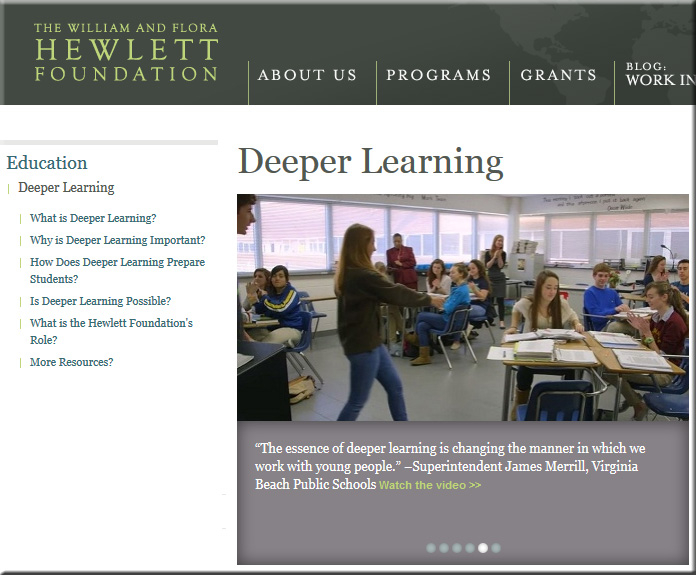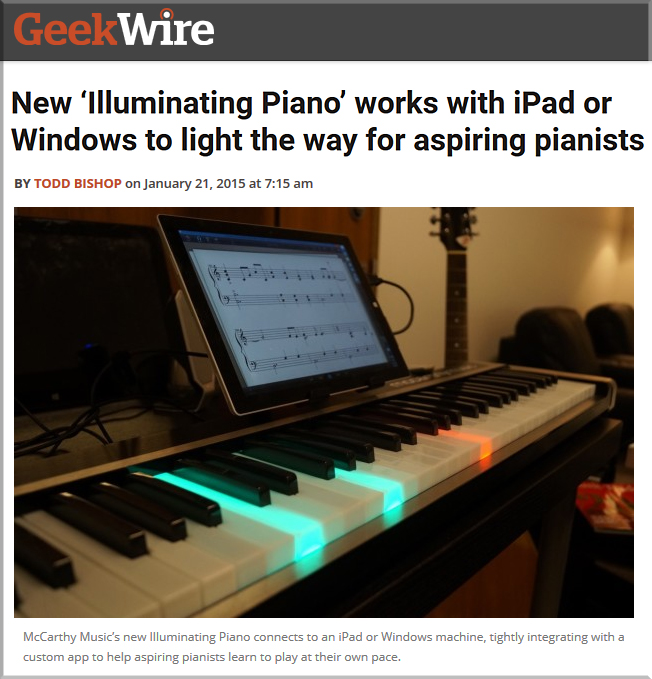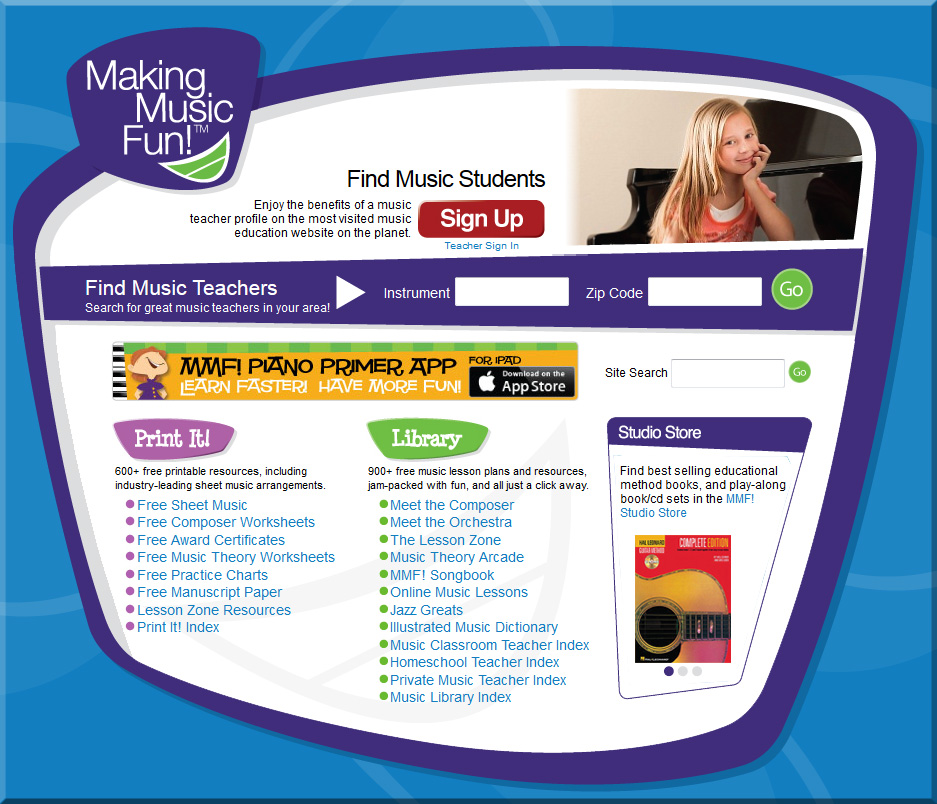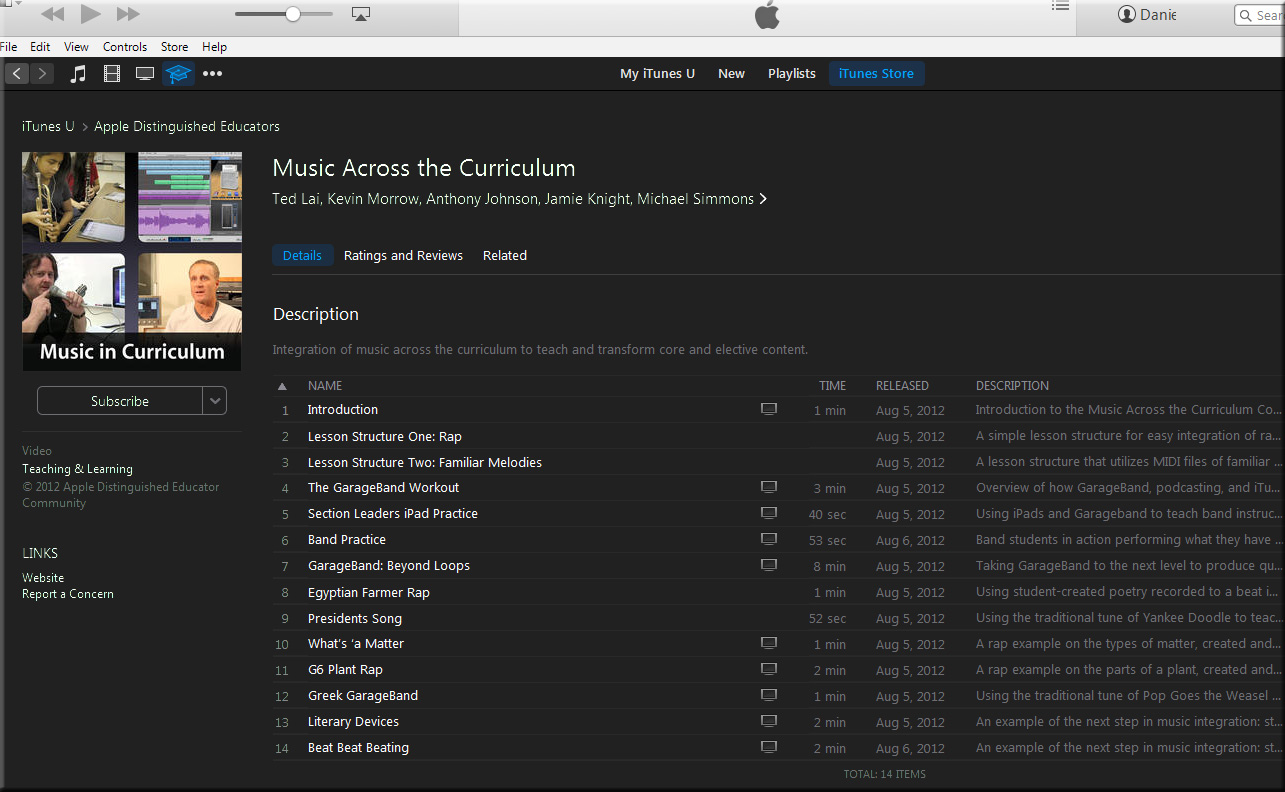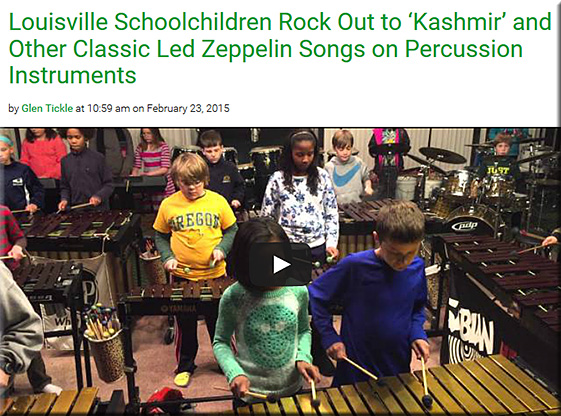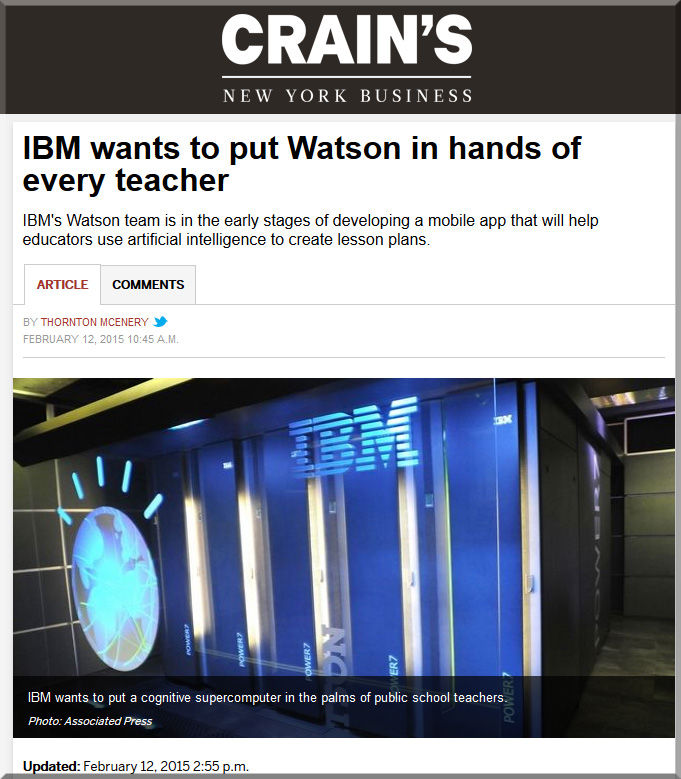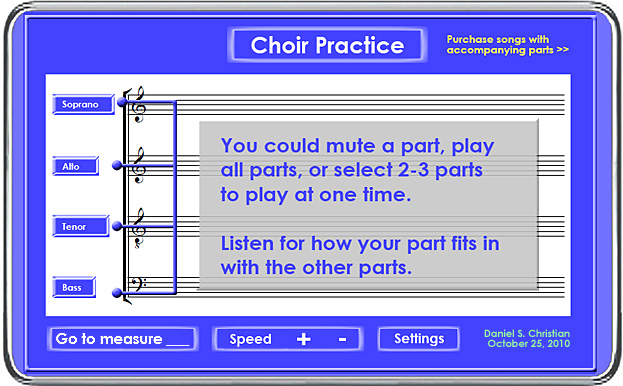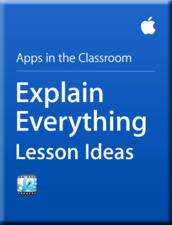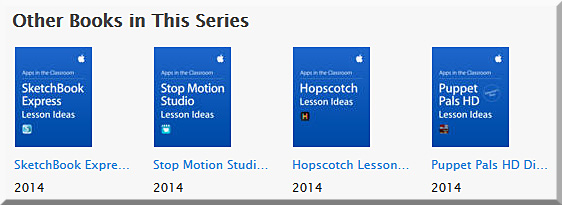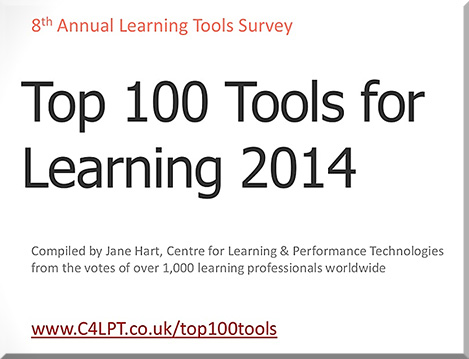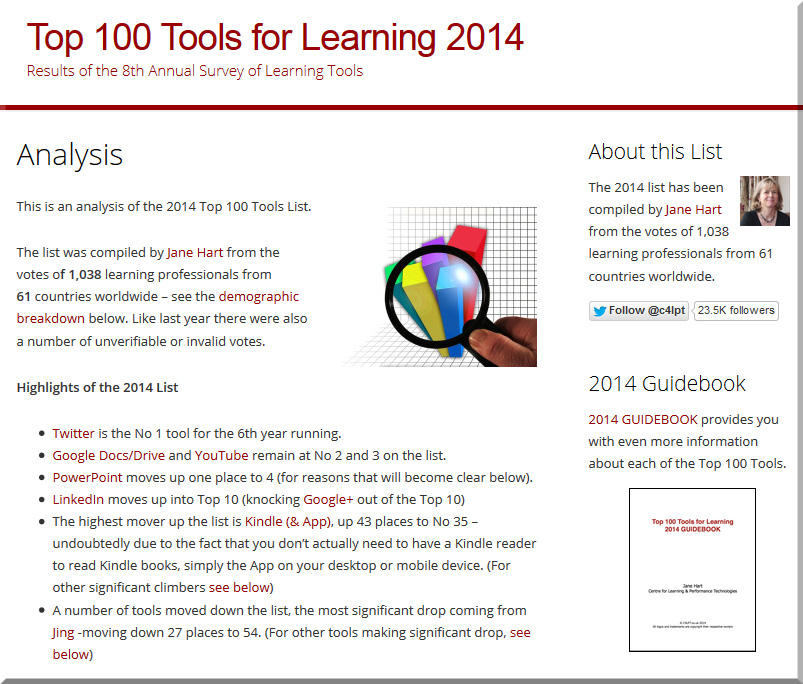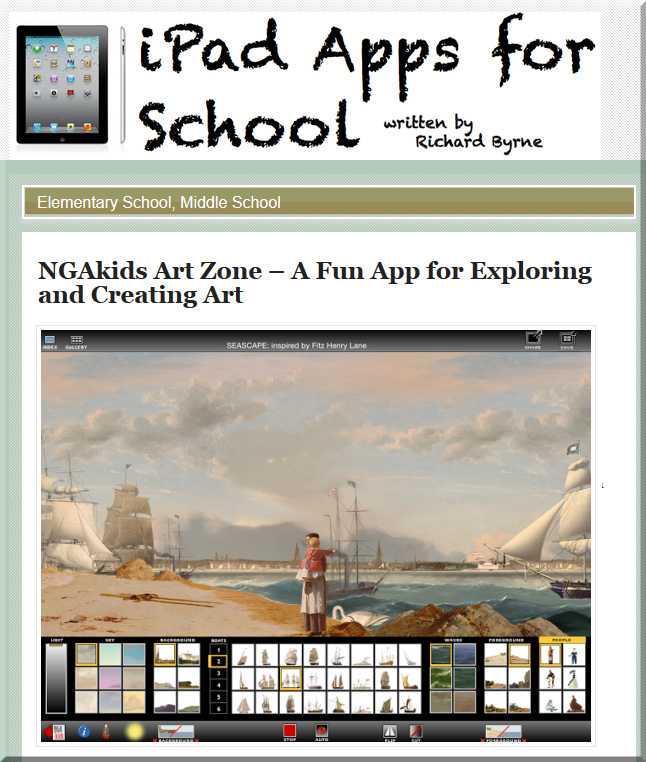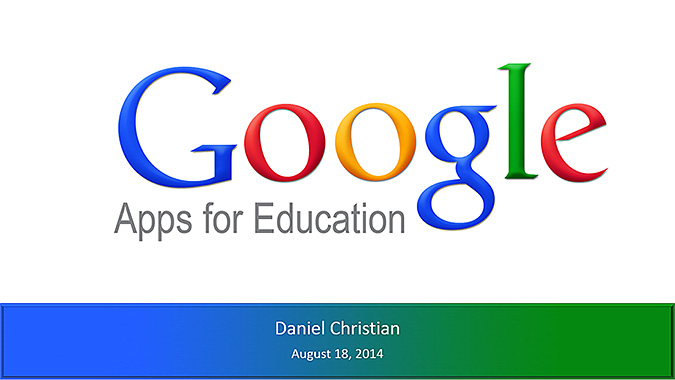CoSN 2015: Harvard’s Chris Dede Talks Deeper Learning
Harvard Wirth Professor in Learning Technologies Chris Dede spoke with EdTech about the concepts behind Deeper Learning and the many ways technology can support it.
Chris mentioned:
- Apprenticeships
- Case-based teaching
- Interdisciplinary teaching
- Teaching for transfer
- The National Research Council’s book entitled, “Education for Life and Work” (see below)
Also see:
-
Education for Life and Work: Developing Transferable Knowledge and Skills in the 21st Century (2012)
Description:
Americans have long recognized that investments in public education contribute to the common good, enhancing national prosperity and supporting stable families, neighborhoods, and communities. Education is even more critical today, in the face of economic, environmental, and social challenges. Today’s children can meet future challenges if their schooling and informal learning activities prepare them for adult roles as citizens, employees, managers, parents, volunteers, and entrepreneurs. To achieve their full potential as adults, young people need to develop a range of skills and knowledge that facilitate mastery and application of English, mathematics, and other school subjects. At the same time, business and political leaders are increasingly asking schools to develop skills such as problem solving, critical thinking, communication, collaboration, and self-management – often referred to as “21st century skills.”Education for Life and Work: Developing Transferable Knowledge and Skills in the 21st Century describes this important set of key skills that increase deeper learning, college and career readiness, student-centered learning, and higher order thinking. These labels include both cognitive and non-cognitive skills- such as critical thinking, problem solving, collaboration, effective communication, motivation, persistence, and learning to learn. 21st century skills also include creativity, innovation, and ethics that are important to later success and may be developed in formal or informal learning environments.This report also describes how these skills relate to each other and to more traditional academic skills and content in the key disciplines of reading, mathematics, and science. Education for Life and Work: Developing Transferable Knowledge and Skills in the 21st Century summarizes the findings of the research that investigates the importance of such skills to success in education, work, and other areas of adult responsibility and that demonstrates the importance of developing these skills in K-16 education. In this report, features related to learning these skills are identified, which include teacher professional development, curriculum, assessment, after-school and out-of-school programs, and informal learning centers such as exhibits and museums.
Also see:
Excerpt of PDF file found at Deeper Learning Defined
DEEPER LEARNING COMPETENCIES | April 2013
Deeper learning is an umbrella term for the skills and knowledge that students must possess to succeed in 21st century jobs and civic life. At its heart is a set of competencies students must master in order to develop a keen understanding of academic content and apply their knowledge to problems in the classroom and on the job.
The deeper learning framework includes six competencies that are essential to prepare students to achieve at high levels.
Competencies
- Master core academic content
- Think critically and solve complex problems
- Work collaboratively
- Communicate effectively
- Learn how to learn
- Develop academic mindsets
From DSC:
That 5th one there…“Learn how to learn” seems extremely key to me these days. I’ve had several graduates of our T&L Digital Studio tell me that one of the most important things they’ve discovered after graduating and hitting the real world is how important learning is to them — and doing so as much and as fast as they can. Below are some quotes from them:
- Lifelong learning has been most helpful in my career. While in college, learn how you learn best. You’ll be able to learn your way out of nearly any challenge faster than others. For me, I learned that audiobooks is a fun way for me to learn.
- I’m a strong believer that its always good to stretch yourself out and learn things you are not familiar with, cause you never know when those extra skills will come-in-handy.
- I wouldn’t stop trying to learn as much as possible. It is good to have a good educational foundation before jumping into a job, but there are many things that you just have to learn by experience outside of the school/college environment that are impossible to learn IN college.
- Continual learning is something that has no end, one can keep at it. It’s amazing how much learning takes place post school and on the job. Things are usually thrown at you in the real world and the only way out is to learn it and to be honest that’s the only way out.
- …learning is something that you have to do no matter what because the world is changing, technology is changing.
- He who learns the fastest wins.
So the better you know how you prefer to learn, the more enjoyable and effective your time spent learning will be.
———–
Also see:
- Deeper Learning: What is it and why is it so effective? — from opencolleges.edu.au by Saga Briggs
“When engaged in deeper learning, students think critically and communicate and work with others effectively across all subjects. Students learn to self-direct their own education and to adopt what is known as ‘academic mindsets,’ and they learn to be lifelong learners.”
.
“Deeper learning is the process of learning for transfer, meaning it allows a student to take what’s learned in one situation and apply it to another.”
.
If all this sounds familiar, that’s because it is. It describes the aim of every reasonably devoted educator since the dawn of time. But therein lies the problem: aim and execution are two very different things. When it comes to deeper learning, we’re aiming for something we understand fully in theory but barely at all in practice. What was once a pedagogical fantasy is now an indispensible necessity, and it’s time for us to wake up.
.
Deeper learning is “an old dog by a new name,” according to Ron Berger, the chief academic officer at Expeditionary Learning, which has brought deeper learning to 165 educational institutions across 33 U.S. states. It’s about combining in-depth academic knowledge and skills with the belief that students must also master communication skills, learn to collaborate effectively, and manage their own learning in order to be ready for college and beyond–pretty much what we’ve known all along, right?
.
Right, says Berger, but have we been doing it all along?
Transferable Knowledge and Skills Key to Success in Education and Work; Report Calls for Efforts to Incorporate ‘Deeper Learning’ Into Curriculum — from nationalacademies.org
Excerpt:
WASHINGTON — Educational and business leaders want today’s students both to master school subjects and to excel in areas such as problem solving, critical thinking, and communication — abilities often referred to by such labels as “deeper learning” and “21st-century skills.” In contrast to the view that these are general skills that can be applied across a range of tasks in academic, workplace, or family settings, a new report from the National Research Council found that 21st-century skills are specific to content knowledge and performance within a particular subject area. The report describes how this set of key skills relates to learning mathematics, English, and science as well as to succeeding in education, work, and other areas of life.
Deeper learning is the process through which a person develops the ability to take what was learned in one situation and apply it to new situations, says the report. Through deeper learning, the person develops transferable knowledge, which includes both expertise in a particular subject area and procedural knowledge of how, why, and when to apply this knowledge to solve unique problems in that subject. The report refers to this blend of transferable content knowledge and skills as “21st-century competencies.”
Deeper Learning — from American Institutes for Research
———–
Addendums on 4/6/15:
- Deeper Learning 2015 – Day 2 — from ghsinnovationlab.com
Excerpt:
Deeper Learning 2015 just gets better and better!
For Day 2 of the conference, I participated in the Deep Dive hosted by Mark Hines of Mid Pacific Exploratory on Pedaling Towards Sustainability. I and the other members of my team, Andrew from The Met in Providence RI, Nate from Poudre High School in Colorado, and Robin from ReadyNation got the chance to think about how design projects centered around bicycles and sustainability can be used to unpack major concepts in physics, math, and the humanities while engaging students in authentic building, problem solving, and teamwork (STEM!!!!). - Deeper Learning 2015 – Day 1
Excerpt:
Well High Tech High knows how to throw a conference, that’s for sure.









